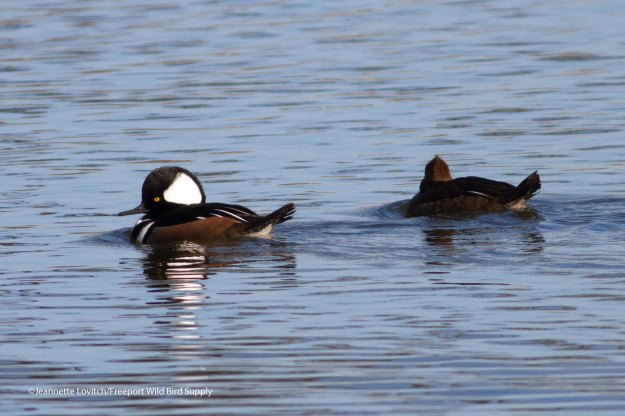
Yup, it’s that time of year again. Not just time to celebrate the end of 2016 (is anyone really upset to see this year end?) and ring in the new, but reset the ol’ Year List (if you keep such a thing) and look forward to the avian wonders of 2017.
That means it’s time for my annual Predictions Blog, where I view into my crystal binoculars and attempt to forecast some of the “new” birds to grace the State of Maine, and my own personal state list, in the coming year.
But first, let us check in with my 2016 Predictions post, and see how I did.
Two birds were added to the cumulative Maine list in 2016. Incredibly, both were on Seal Island! A Great Knot on July 23rd followed an Ancient Murrelet in May that was later seen (presumably the same bird) at Petit Manan Island and then Machias Seal Island. While Ancient Murrelet was on my radar, and was part of my lengthy honorable mention list, Great Knot most definitely was not! In fact, this was one of the most amazing vagrant records in the state in some time.
My predictions for the next 25 species to be found in the state therefore has not changed too much. The new list is now:
1) Neotropical Cormorant
2) Graylag Goose
3) California Gull
4) Roseate Spoonbill
5) Spotted Towhee
6) Hammond’s Flycatcher
7) Bermuda Petrel
8) Black-chinned Hummingbird
9) Common Shelduck – with a recent spate of records in Eastern Canada, including three birds in New Brunswick in December,a pattern of vagrancy is definitely emerging. Provenance will always be a question however, as this species is kept in captivity. However, we used to dismiss every Barnacle Goose – for example – as simply an “escapee,” but its clear many are of natural vagrancy. Increases in the species in Iceland are a good sign that some of these recent records are of wild birds.
10) Fieldfare
11) Audubon’s Shearwater – on “hypothetical” list, but I think the record is good.
12) Little Stint
13) Anna’s Hummingbird
14) “Western” Flycatcher (Pacific-slope/Cordilleran)
15) Vermillion Flycatcher
16) Common Ground-Dove
17) Allen’s Hummingbird
18) Redwing – one in New Hampshire in March was a “near-miss!”
19) Western Wood-Pewee
20) Spotted Redshank
21) Zone-tailed Hawk
22) Gray Flycatcher
23) Ross’s Gull
24) Black-tailed Gull
25) Common Scoter
Meanwhile, I was very pleased to add six species to my own Maine list this fall. First up was the Black-throated Sparrow in Winter Harbor, which I visited on January 17th. Because it was discovered before I posted my Predictions Blog last year, I can’t count that as a prediction! But you can be sure I was happy to put this stunning southwestern sparrow on my state list anyway.

My only self-found addition was my 6th ranked species: Western Grebe. I found one at Simpson’s Point in Brunswick on April 17th. It’s always much, much sweeter to find, rather than chase, a new state bird!
Adding American Three-toed Woodpecker to my list was just a matter of finding the time and putting in the effort. In Mid-July, Evan Obercian and I used it as an excuse to spend a weekend around Baxter State Park, which eventually yielded a pair of American Three-toed Woodpeckers along Telos Road.
A long-staying King Rail near Moody Point in the Webhannet Marsh was my 4th addition of the year. It was very high on my honorable mention list, but I left it off the ranking this year.
My Washington County Tour in August once again produced a Sabine’s Gull, and once again it was in Canadian waters, despite our best efforts to follow it across the border. Therefore, I was elated when one was discovered at Sabattus Pond on October 29th. This was my only “drop what I was doing and rush out the door” twitch of the year. It was worth it. I really like Sabine’s Gulls.
And certainly last but not least was the Bullock’s Oriole in Camden that Luke Seitz and I drove up to see on November 25th. Another bird high on my Honorable Mention list, but it too was not on the official Top 25.
Great Skuas were again seen with regularity off of Bar Harbor, but I missed them on my paltry few trips offshore again this year. The nemesis continues! There was also a one-afternoon wonder Harris’s Sparrow in Belgrade in November.
But with my #1, #6, and #13 “next species” checked off, my updated list for my own next 25 species in Maine now reads:
1) Great Skua
2) Eurasian Collared-Dove
3) Graylag Goose
4) Say’s Phoebe
5) American White Pelican
6) Neotropic Cormorant
7) Fork-tailed Flycatcher
8) Tundra Swan
9) California Gull
10) Franklin’s Gull
11) Black-bellied Whistling-Duck
12) Slaty-backed Gull
13) Yellow Rail
14) Boreal Owl
15) Calliope Hummingbird
16) Cerulean Warbler
17) White Ibis
18) Gull-billed Tern
19) Hammond’s Flycatcher
20) Loggerhead Shrike
21) Ivory Gull
22) Roseate Spoonbill
23) Spotted Towhee
24) Virginia’s Warbler
25) Common Shelduck

Bullock’s Oriole on 11/25 in Camden


















